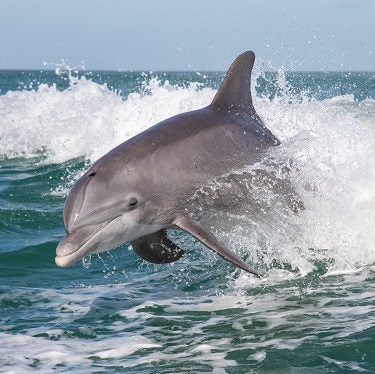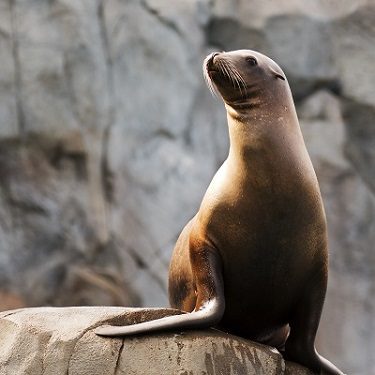Marine Life Encyclopedia
Cephalopods, Crustaceans, & Other Shellfish
Humboldt Squid
Dosidicus Gigas
Distribution
Tropical to subpolar latitudes of the eastern Pacific Ocean
eCOSYSTEM/HABITAT
Open ocean (epipelagic to mesopelagic)
FEEDING HABITS
Active predator
TAXONOMY
Like many squids, the Humboldt squid grows rapidly and likely lives for only a single year. During that time, it reaches its maximum size, reproduces multiple times, and dies. Humboldt squid reproduce via internal fertilization and lay large egg masses of at least one million eggs. In their short lifetime, females may lay as many as 20 million eggs, the most of any known cephalopod (squid, octopus, or relative). After they hatch, Humboldt squid grow from about one millimeter to well over a meter in just one year. To support a growth rate that high, Humboldt squid are voracious predators and have been known to decimate populations of small fishes or smaller squids when their numbers explode. Several species prey on this Humboldt squid throughout the many life history stages, but adults are a favorite food of sperm whales, billfishes, and other very large predators.
Humboldt squid are excellent swimmers and are covered in specialized color cells that allow them to rapidly and repeatedly change color. This behavior is used to both communicate with others and to display warning coloration to other species. On very rare occasion, individuals have been known to act aggressively toward SCUBA divers who were diving in groups of Humboldt squid that were feeding. These interactions are likely a result of mistaken identity by the squid.
In recent decades, the Humboldt squid has undertaken a massive expansion in geographic range. Historically, it was common from Peru to central Mexico, but now they stretch from the tip of Chile to Alaska. There is a very large population in the Gulf of California, Mexico that scientists believe only recently became established there, and this species is now common throughout California. There are large commercial fisheries for Humboldt squid in Mexico and in Peru, and a sport fishery has developed in California. In Mexico, several hundred metric tonnes are captured every night by hand by artisanal fishers who sell their catch to a single local processing plant. Though this species is fairly well studied, its conservation status is currently unknown. Its expanding range and apparently increasing numbers in some places may be balanced by increasingly large fisheries in other areas. As it is an important prey species for charismatic, protected species like sperm whales and an important fishery species for small-scale fishers throughout its range, it is vital that scientists determine its population trends and continue to study its biology and ecology.
Engage Youth with Sailors for the Sea
Oceana joined forces with Sailors for the Sea, an ocean conservation organization dedicated to educating and engaging the world’s boating community. Sailors for the Sea developed the KELP (Kids Environmental Lesson Plans) program to create the next generation of ocean stewards. Click here or below to download hands-on marine science activities for kids.
Additional Resources:
Get Involved

Donate Today
SUPPORT OUR WORK TO PROTECT THE OCEANS BY GIVING TODAY
With the support of more than 1 million activists like you, we have already protected nearly 4 million square miles of ocean.

TAKE ACTION NOW
Support policy change for the oceans
Decision-makers need to hear from ocean lovers like you. Make your voice heard!

VISIT OUR ADOPTION CENTER
SYMBOLICALLY ADOPT AN ANIMAL TODAY
Visit our online store to see all the ocean animals you can symbolically adopt, either for yourself or as a gift for someone else.

DOWNLOAD OCEAN ACTIVITIES
HELP KIDS DISCOVER OUR BLUE PLANET
Our free KELP (Kids Environmental Lesson Plans) empower children to learn about and protect our oceans!




